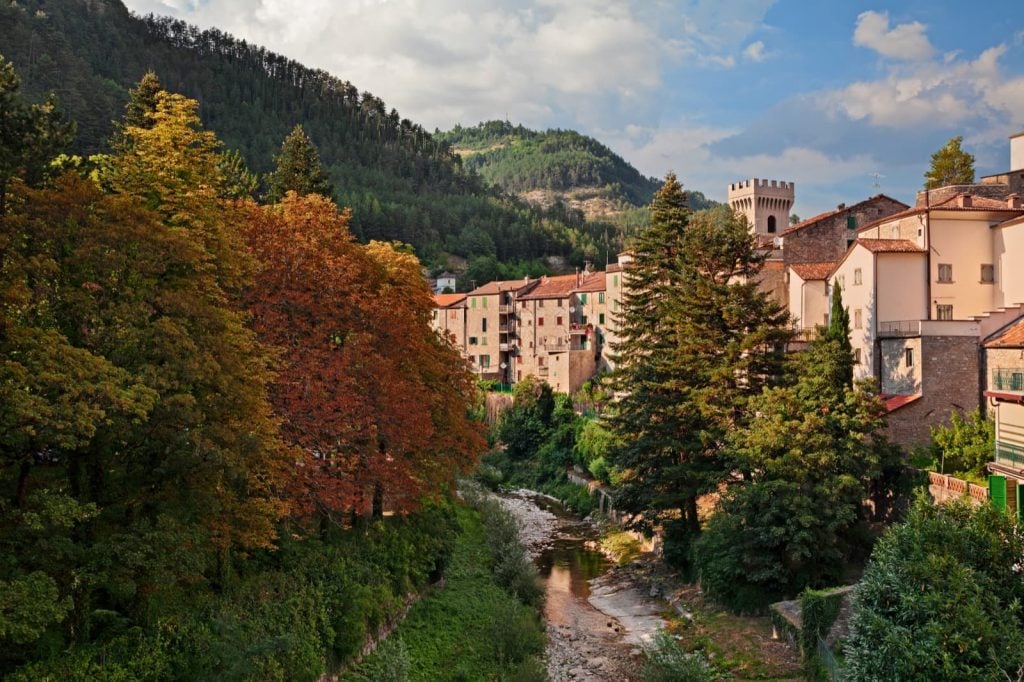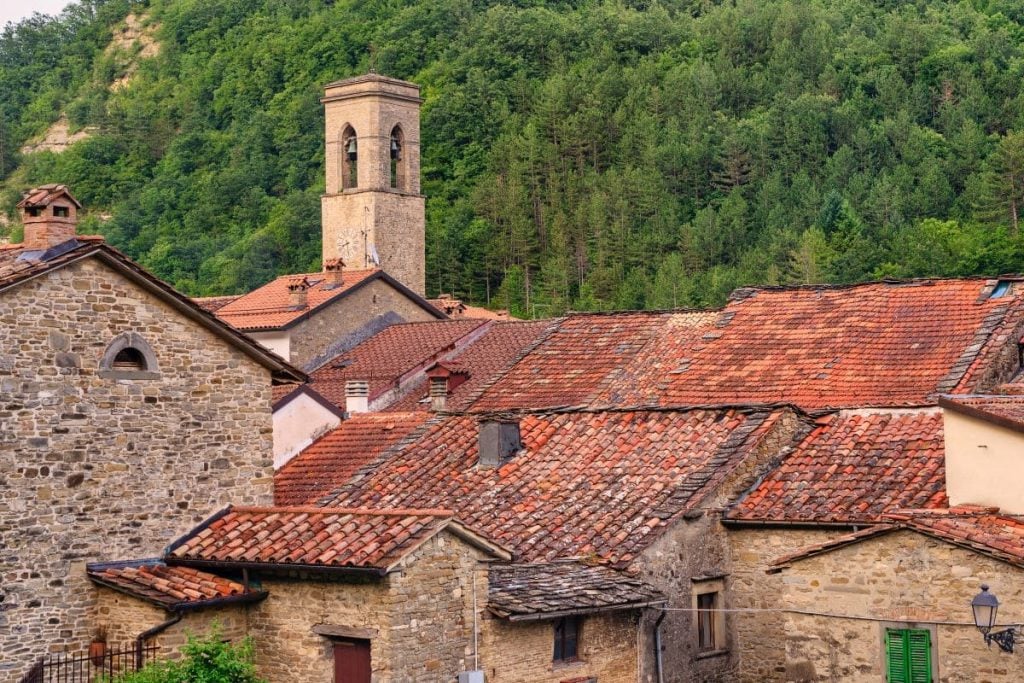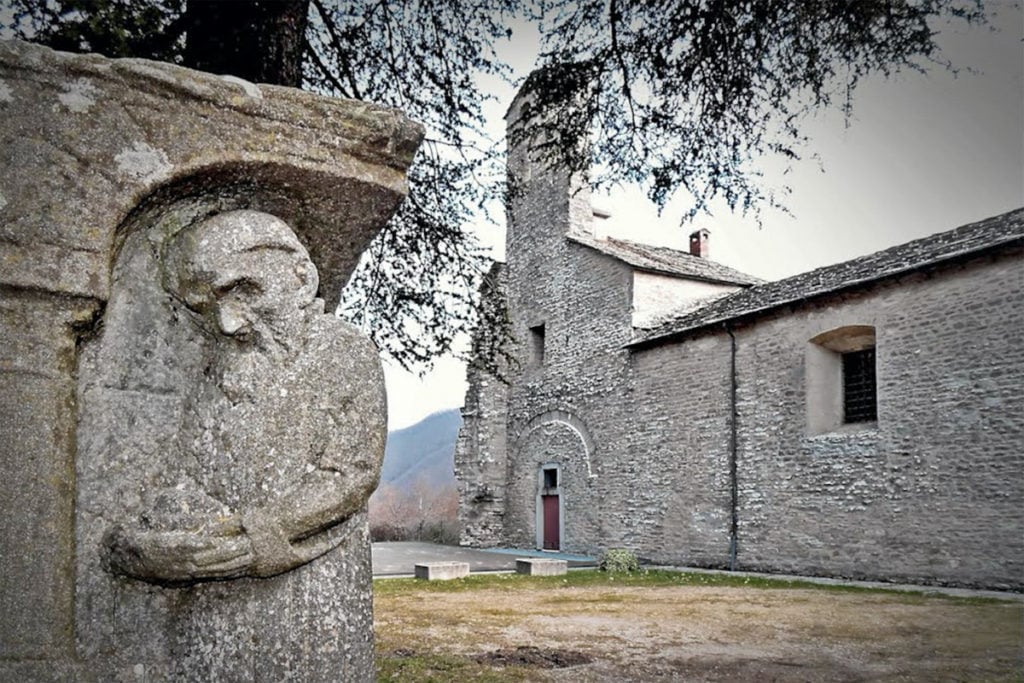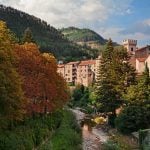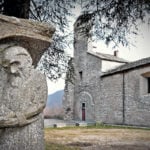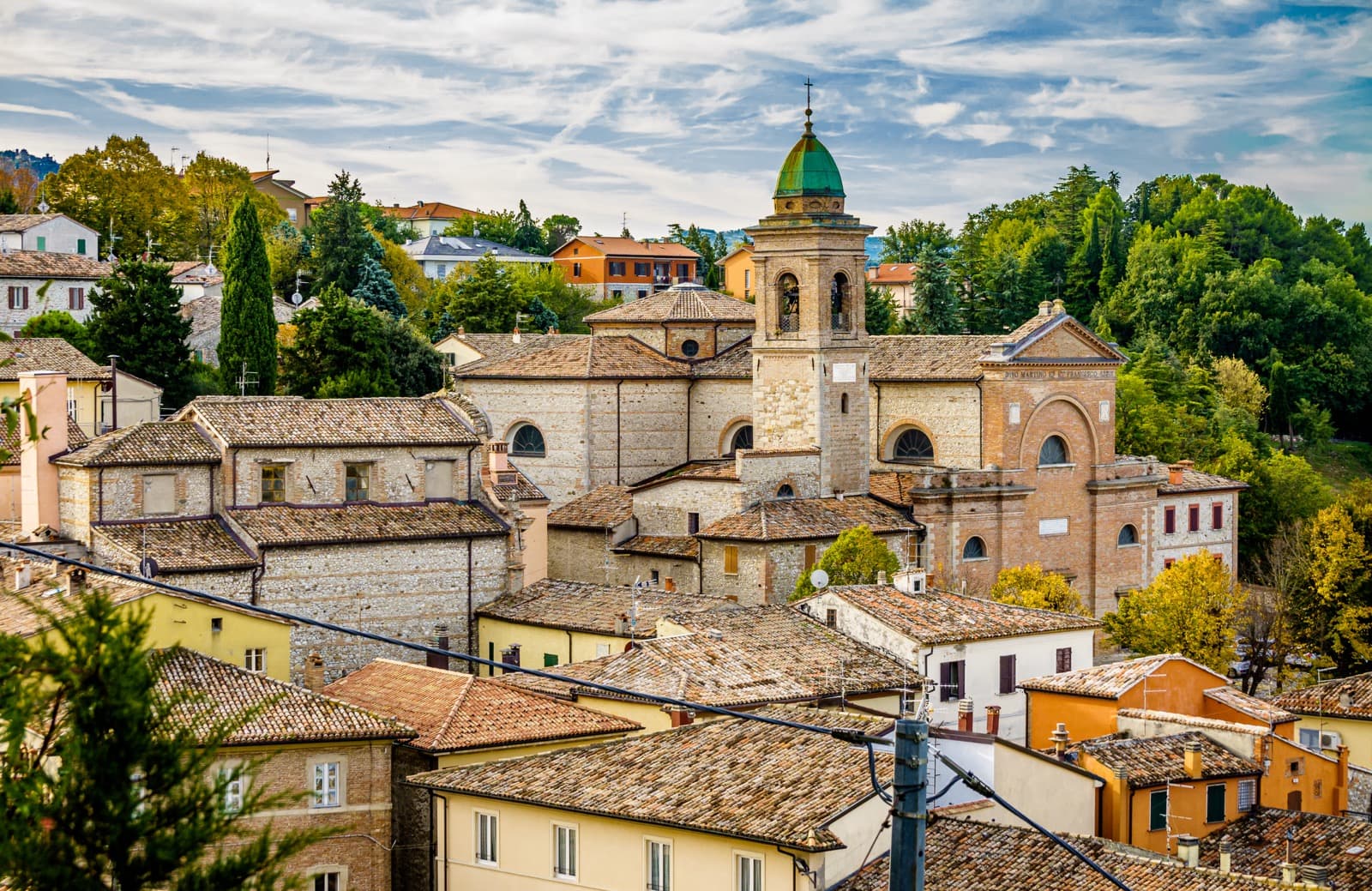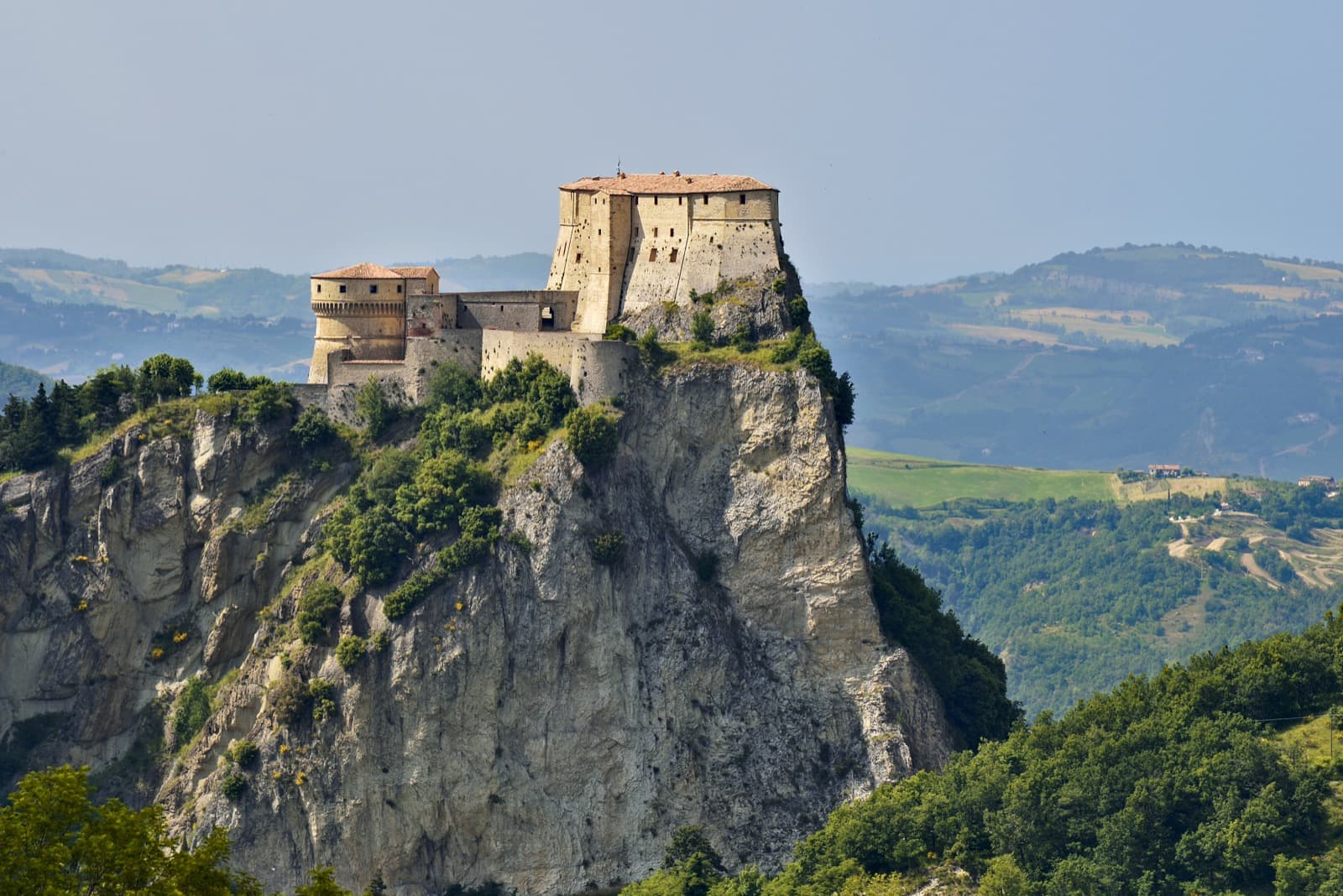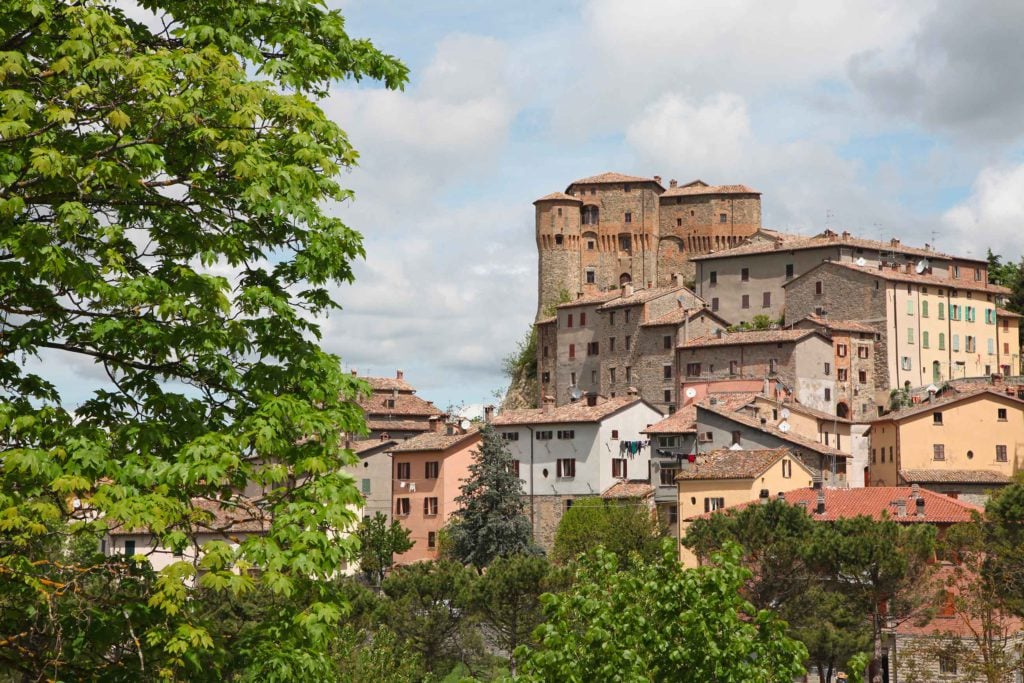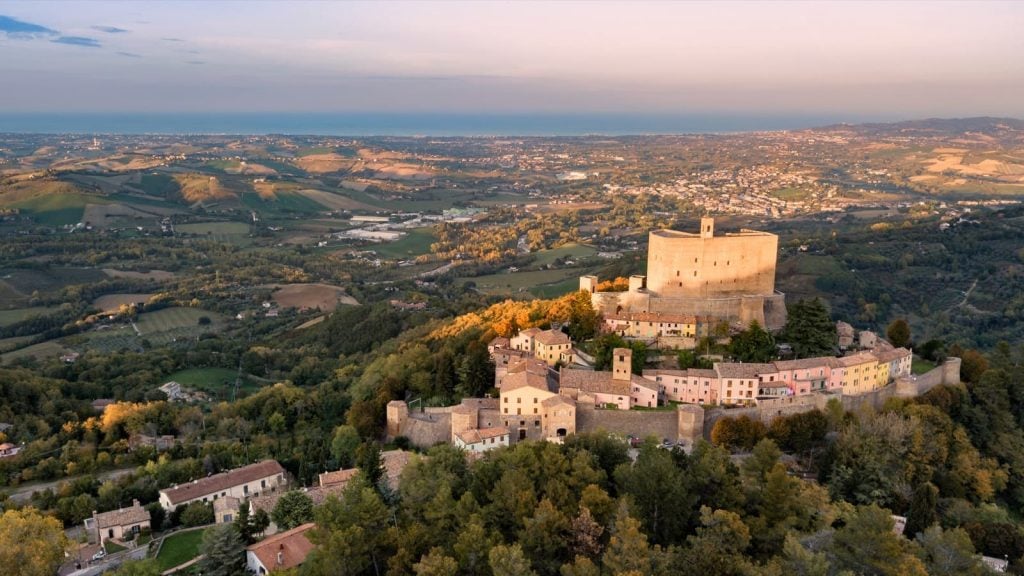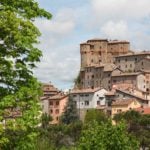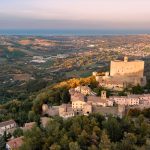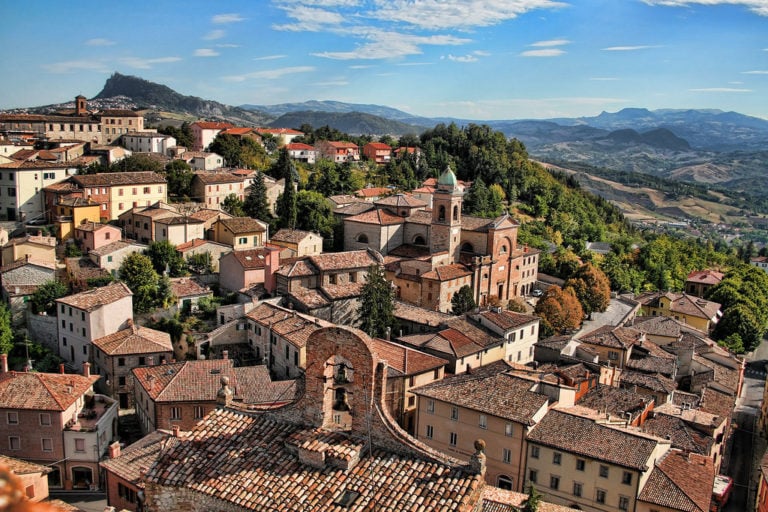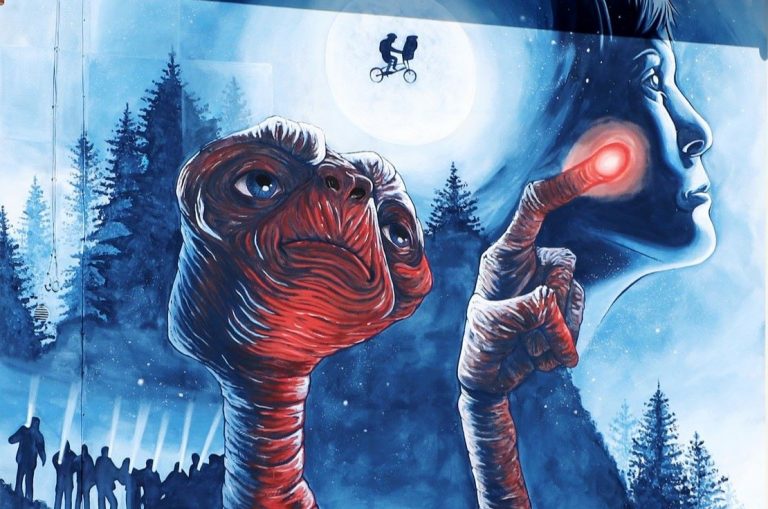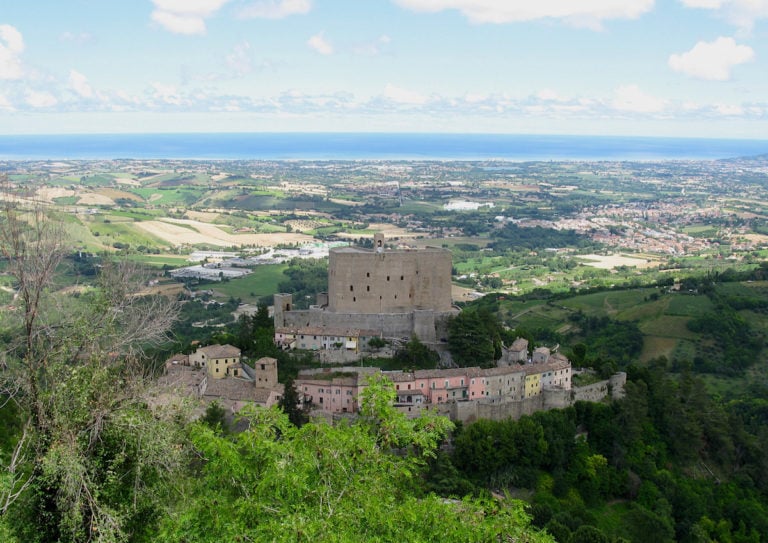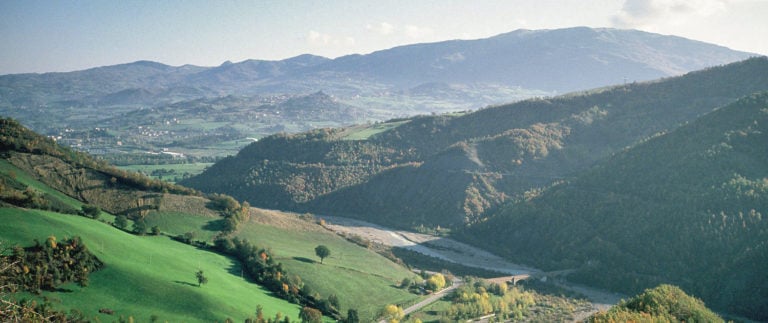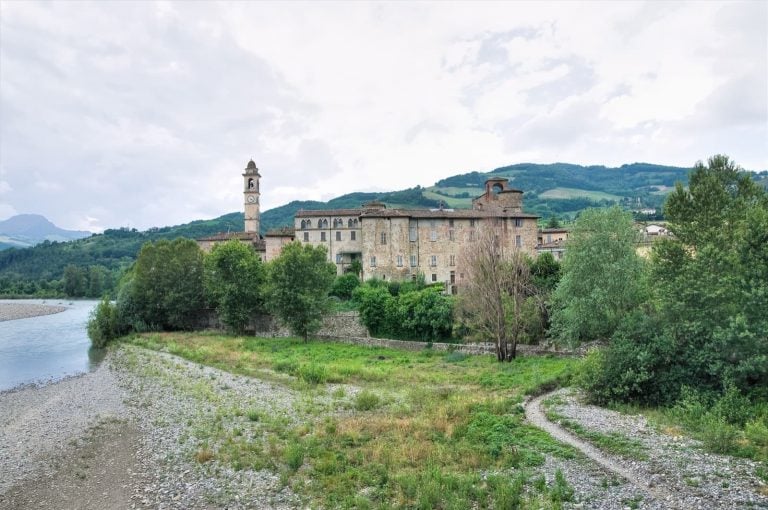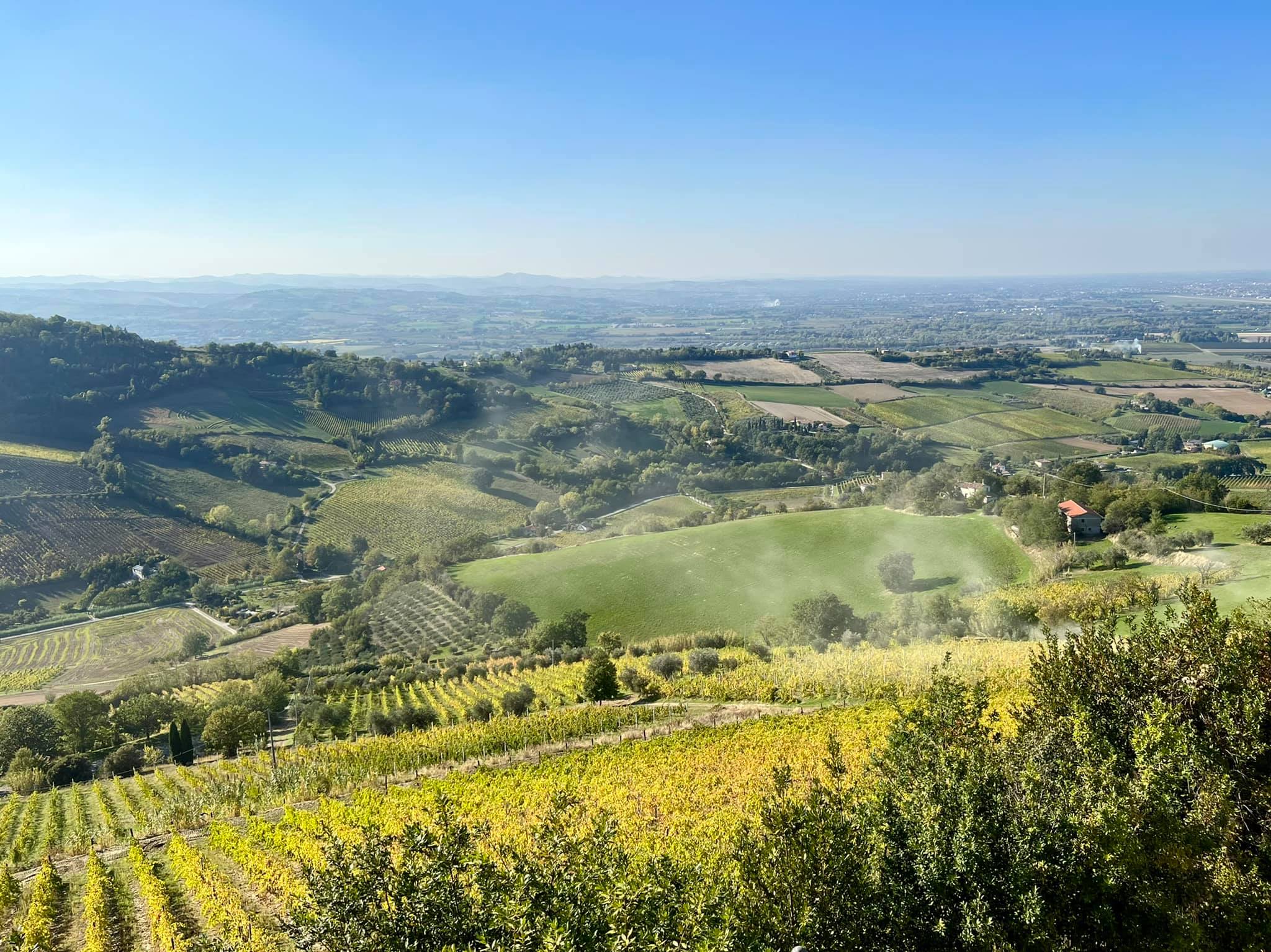The Orange Flag is a tourist-environmental quality mark created in 1998 by the Italian Touring Club to highlight the tourist potential of lesser-known Italy and small inland towns.
The TCI awards the Orange Flag to towns that, according to 250 analysis parameters, are able to offer their visitors a combination of art, nature, good food, hospitality and environmental-social sustainability.
In Emilia-Romagna, there are 24 towns certified with the Orange Flag.
Despite their different natural settings – Apennines, hills, plains – and their different historical origins – Roman, Medieval, Renaissance – they have one thing in common: they are all authentic places where travellers are welcomed by hospitable communities who, with dedication and enthusiasm, preserve traditions, enhance the local heritage and bring the territory to life with events and festivals.
These small towns are real treasure troves of history, and a stroll through their narrow streets means immersing yourself in a unique atmosphere of slow rhythms and genuine flavours. From Castell’Arquato, with its medieval charm, to Brisighella, famous for its ancient donkey road, each village tells a different story and offers an unforgettable experience.
Follow us to discover the Orange Flag villages of Emilia-Romagna.
Nearby Piacenza
- Bobbio, on the banks of the River Trebbia, is a medieval center famous for its picturesque Gobbo Bridge and its Abbey, founded in 614 by the Irish monk Saint Columbanus.
- Vigoleno, with its imposing crenellated walls and quadrangular keep, is a perfect example of the housing logic of the Middle Ages.
- Castell’Arquato, nestled in the hills of the Val d’Arda, is a medieval village of narrow streets and stone houses dominated by the mighty Rocca Viscontea.

Nearby Parma
- Fontanellato, in the Bassa Parmense, is characterised by the memorable Rocca Sanvitale, seat of the Castles of the Duchy of Parma and Piacenza.
- Busseto, also in the Bassa Parmense along the Strada del Culatello, is famous for being the birthplace of maestro Giuseppe Verdi.
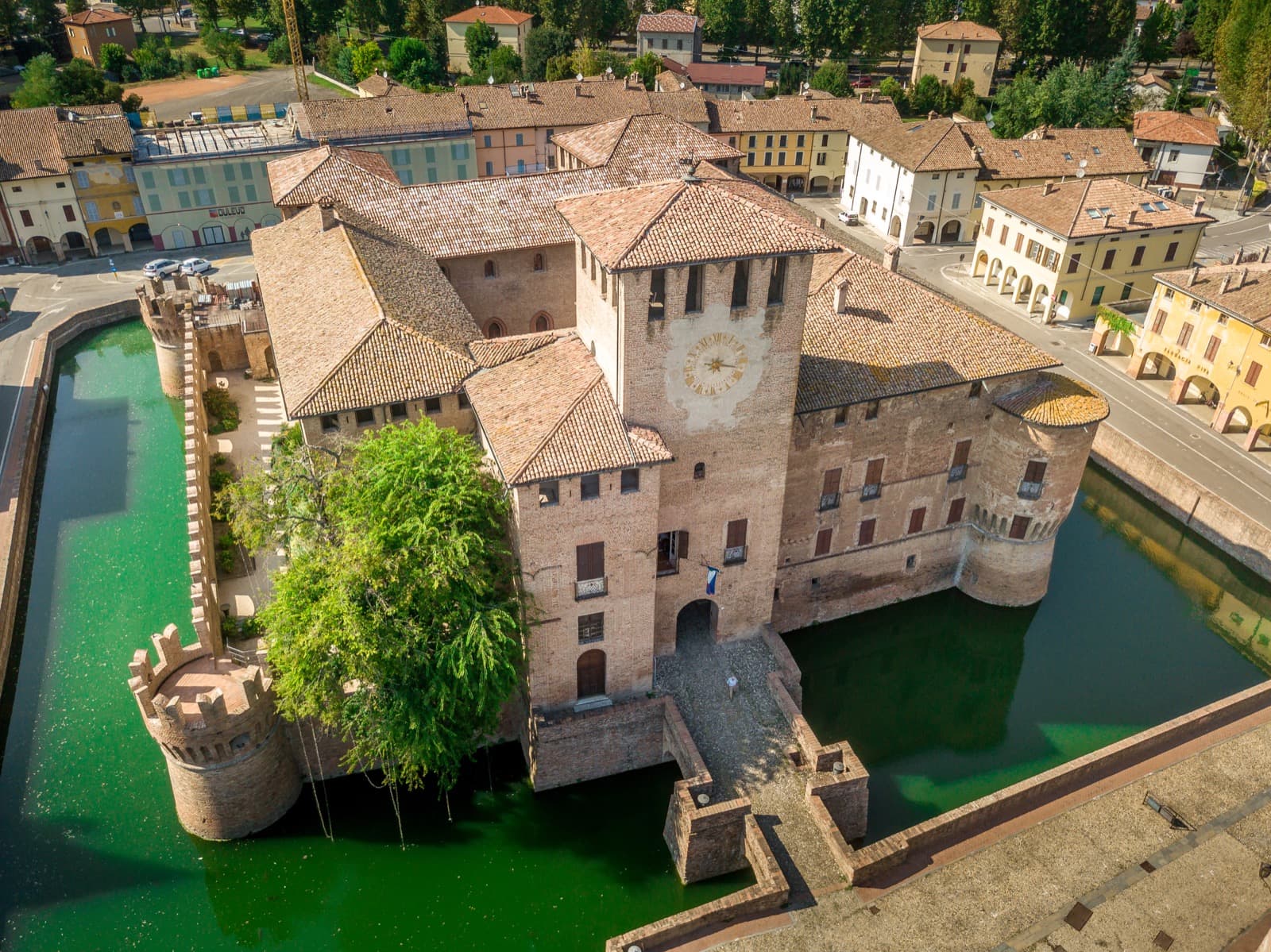
Nearby Modena
- Castelvetro di Modena, amidst hills planted with vineyards, is the home of Lambrusco Grasparossa and Traditional Balsamic Vinegar of Modena.
- Fanano, nestled in the natural landscape of the Parco del Frignano, is known as the city of stone because of the tradition of local picchiarini.
- Sestola, at the foot of Mount Cimone and a stone’s throw from its ski resort, is a place where it is possible to live in harmony with the mountains.
- Fiumalbo, a few kilometres from the Tuscan border and Abetone, is a small village with perfectly preserved stone houses.
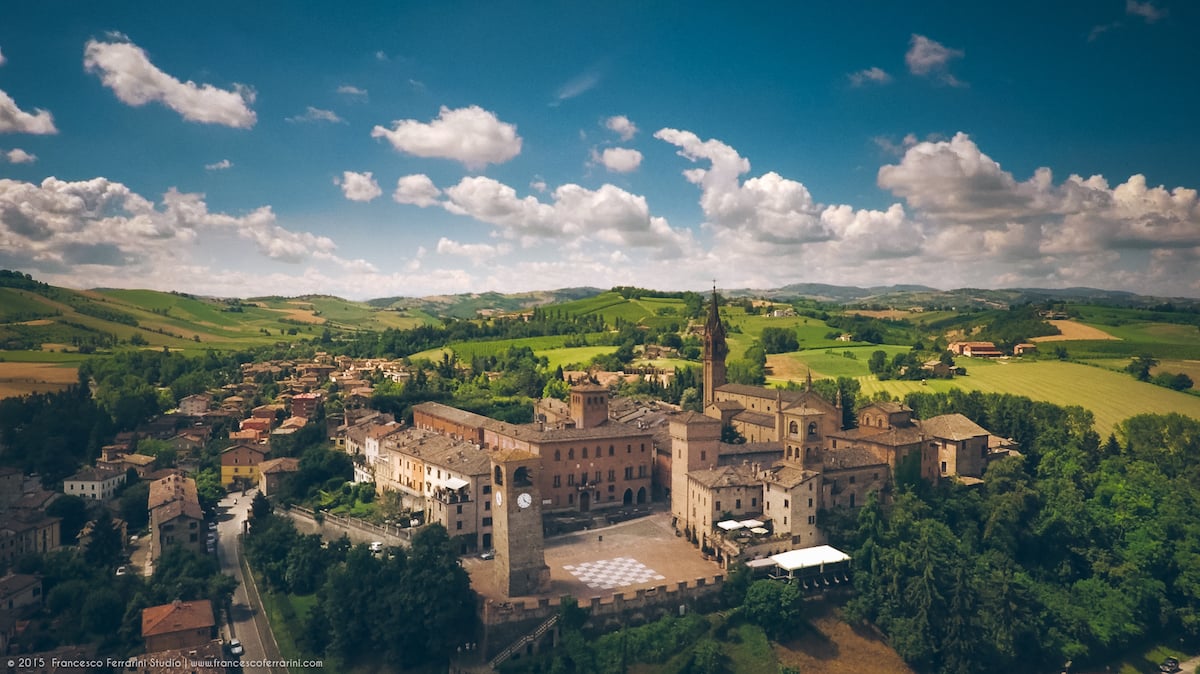
Nearby Bologna
- Dozza, in the hills of Imola, is the village of the murals of the Biennale del Muro Dipinto, and of the Enoteca Regionale dell’Emilia-Romagna hosted inside its Rocca Sforzesca.
- Pieve di Cento, built on the Bolognese plains along the course of the Reno river, is also called Little Bologna because of its long porticoes.

Nearby Ravenna
- Brisighella, in the lower Lamone river valley, is the village of the three hills, at the gateway to the Gypsum Vein of Romagna Regional Park.

Nearby Forlì – Cesena
- Premilcuore, in the valley of the Rabbi river, is a medieval village nestled in the lush natural setting of the Casentino Forests.
- Castrocaro Terme and Terra del Sole, the former is an important spa town whose history is intertwined with that of Caterina Sforza, the latter is a fortified ideal town from the Renaissance period.
- Portico and San Benedetto, a picturesque medieval town that keeps alive the tradition of crib art the first, and a center linked to the ancient Benedictine Abbey the second.
- Bagno di Romagna, in the heart of Tuscany-Romagna, is an ancient spa center ideal for a holiday dedicated to nature and wellness.
- Longiano, in the foothills of Cesena, is a well-preserved medieval village overlooked by the Malatesta Castle, which today houses the Tito Balestra Art Collection.
- Monteleone, a small hamlet in the municipality of Roncofreddo, is perched on a rocky spur from which there is a panoramic view of the surrounding countryside.
- Sarsina, in the valley of the Savio river, is the birthplace of the great Latin playwright Plautus and preserves the remains of San Vicinio, its first bishop.
Longiano (FC) Ph. Vivida Photo PC via shutterstock
Premilcuore (FC) Ph. ermess via shutterstock
Bagno di Romagna (FC) | Ph. Claudio Giovanni Colombo via Shutterstock
Sarsina (FC) Basilica di San Vicinio, Ph. Vivida Photo PC via shutterstock
Abbazia di San Benedetto in Alpe (Portico di Romagna)
Nearby Rimini
- Verucchio, with its imposing castle dominating the Marecchia valley, is a village of ancient origins, cradle of the Villanovan civilisation first, and then of the Malatesta Seignory.
- San Leo, also in the Marecchia valley, is characterised by a fortress built on an imposing rock with sheer walls.
- Sant’Agata Feltria, in the Montefeltro hills, is a fairytale village, famous for its National Fair of the White Truffle and its characteristic Christmas markets.
- Pennabilli, built on the western slopes of Mount Carpegna, is the union of two ancient castles and is immersed in the landscapes of the Sasso Simone and Simoncello Natural Park.
- Montefiore Conca, in the valley of the Conca river, with its imposing Malatesta fortress, is one of the most intact and fascinating towns that belonged to the Malatesta Seignory.
Verucchio (RN) Ph. FooTToo via shutterstock
San Leo, Fortress Ph. Carlo Grifone
Borgo di-Sant'agata Feltria, Rimini | Ph Assessorato al Turismo Provincia di Rimini
Pennabilli Ph. KANGIITALY via shutterstock
Montefiore Conca Ph. PhotoCG70 via shutterstock
Author
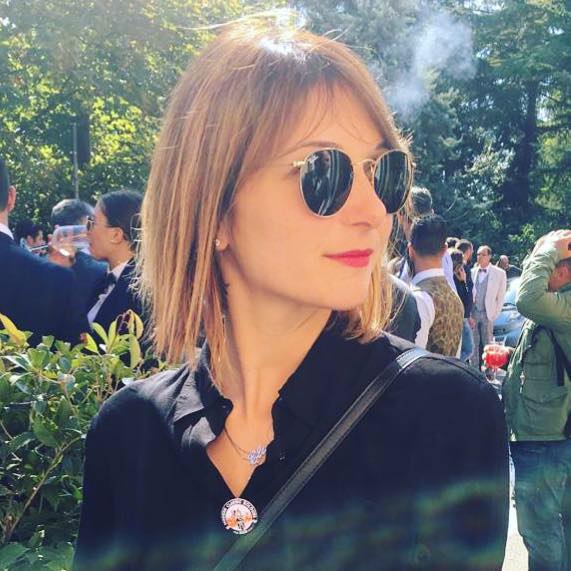
Elisa Mazzini
Social Media Manager for @inEmiliaRomagna and full-time mom.
You may also like
The most beautiful Italian Villages in Emilia-Romagna
by Elisa Mazzini /// November 26, 2024
The Coastal Towns of Emilia-Romagna
by Walter Manni /// July 27, 2018

Interested in our newsletter?
Every first of the month, an email (in Italian) with selected contents and upcoming events.
5 places to visit in Emilia Romagna: little villages and hamlets
by Elisa Mazzini /// May 12, 2022
6 Colourful Villages in Emilia-Romagna
by Maria Grazia Masotti /// February 29, 2024
Dolce Vita in Valmarecchia: an itinerary among hamlets and hills
by Elisa Mazzini /// June 7, 2016
Five villages reachable by train in Emilia-Romagna
by Giulia Delaini /// April 12, 2018
Hidden paradises of Emilia Romagna 20 minutes away from Via Emilia Route
by Walter Manni /// November 13, 2024

